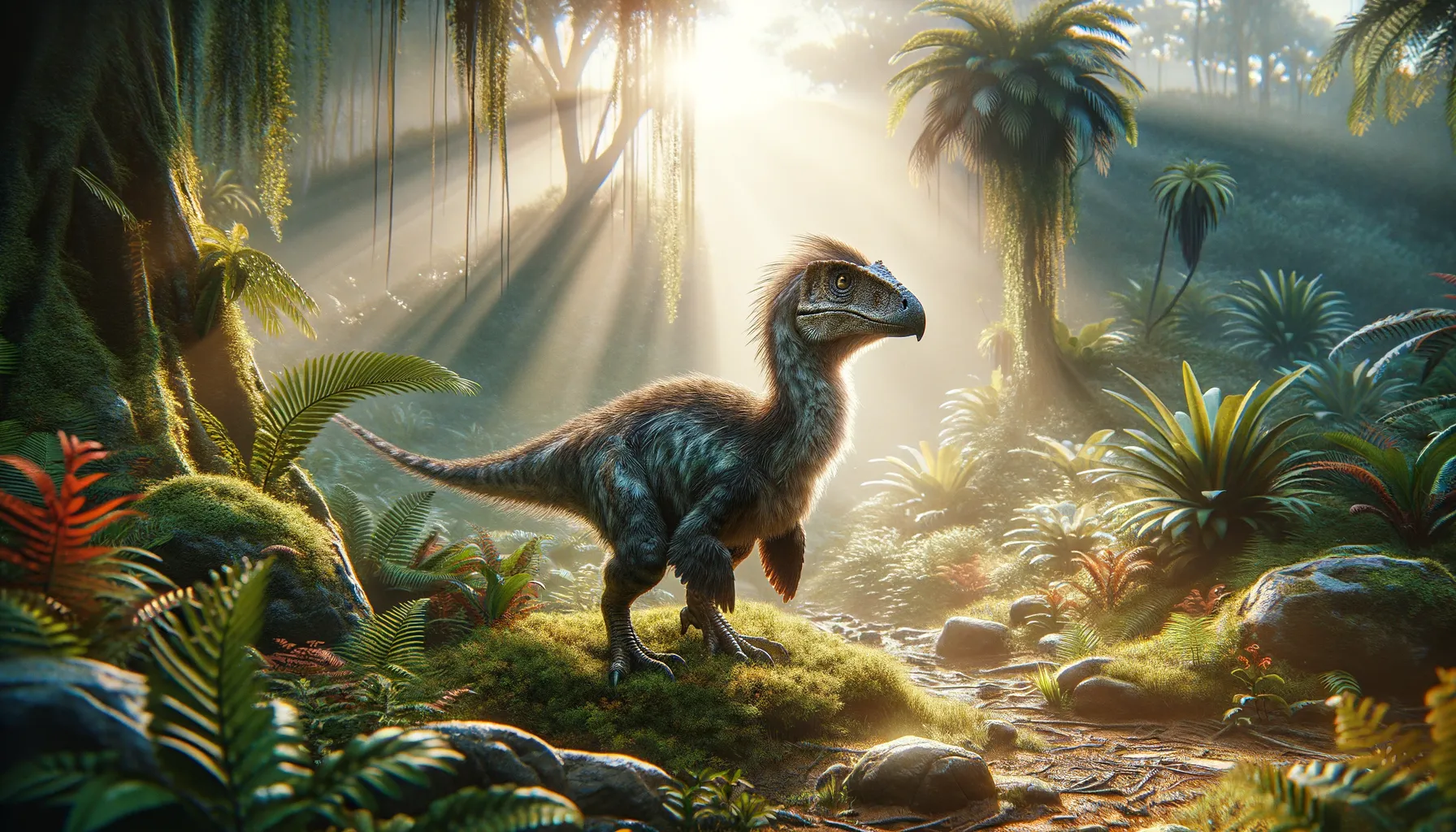
Protoavis
A glimpse into early bird evolution.
Period
Triassic
Length
About 2 feet in length.
Height
Approximately 1 foot tall.
Weight
Estimated at around 2 pounds.
Protoavis was a small, bird-like theropod dinosaur that lived during the Late Triassic period. Its discovery was controversial due to debates about its classification and evolutionary significance in relation to birds. The remains were fragmentary, sparking discussions about whether it truly represented an early bird or a mix of species. Its potential features, like feathers and teeth, challenged the understanding of avian evolution.
Diet
Protoavis likely had a carnivorous diet, feeding on small insects and vertebrates. Its sharp teeth suggest an ability to process meat efficiently.
Hunting
As a small predator, Protoavis probably relied on stealth and agility to capture its prey. It may have used quick movements and flapping motions to surprise and grab unsuspecting targets.
Environmental challenges
Living during the Triassic meant facing a dynamic environment with varying climates and ecosystems. Protoavis had to compete with other small predators for food in its niche. Environmental shifts could have impacted food availability and the stability of its habitats.
Speed
Likely swift and agile, possibly up to 20 mph.
Lifespan
Estimated around 10 to 20 years.
First discovery
Discovered in Texas, 1984 by Sankar Chatterjee.
Fun Facts
- Protoavis was discovered in Texas in 1984 by a paleontologist named Sankar Chatterjee.
- The name Protoavis means 'first bird,' but its classification as a bird or close relative is highly debated.
- It lived during the Late Triassic period, roughly 210 million years ago.
- Protoavis may have been one of the earliest creatures to exhibit bird-like features, if it were indeed related to birds.
- The fossil remains of Protoavis are quite incomplete, leading to significant controversy over its true nature.
- Some scientists argue Protoavis could be more dinosaur-like than bird-like, sparking ongoing debates in the paleontology community.
- Because of its controversial classification, Protoavis is a popular topic among dinosaur enthusiasts and researchers alike.
Growth and Development
Protoavis likely underwent rapid growth during its early development, reaching maturity relatively quickly like modern birds. Bone structure suggests potential adaptations for swift movement as it developed.
Habitat
Protoavis lived in floodplain environments with seasonal changes, impacting resource availability. These regions were rich in small prey but also housed larger predators. Its habitat would have been lush with cyclical wet and dry periods.
Interaction with other species
Protoavis may have coexisted with various reptiles and early mammal-like species. Competition would have shaped its behavior and evolutionary pressures. Interactions with other species might have included competition for territory and food.
Natural lifespan
Its lifespan was likely around 10 to 20 years.
Reproduction
Protoavis likely laid eggs, possibly in nests similar to other small dinosaurs. Reproductive behavior might have involved caring for young until they were capable of independence. The exact nature of its parental care remains speculative due to limited fossil evidence.
Social behaviour
Its social behavior is not well understood, but it may have been solitary or lived in small groups. Interaction with conspecifics could revolve around territory and mating competition. Social structures would have influenced survival and reproductive success.
Fossil locations
Protoavis fossils were found in Texas, USA, within the Dockum Group. The discoveries sparked debates about their condition and classification. These finds were primarily fragmentary bones, making detailed interpretation challenging.
